Creating garden borders with bamboo is a simple and effective way to beautify your outdoor space. Bamboo is a durable, easy-to-grow plant that comes in many colors and sizes to suit your preferences. You can use bamboo to DIY garden borders in various styles, from classic to modern, from natural to refined. In this article, we will guide you on how to make bamboo garden edging easily and quickly.
Contents
1. Bamboo garden edging ideas
Bamboo is a versatile grass that thrives in diverse climates and soils, offering a range of advantages such as durability, aesthetic appeal, environmental friendliness, and low maintenance. Utilizing bamboo to enhance your garden’s visual appeal is achievable through the creation of landscape fences.
Bamboo border design not only contributes to a cool and private atmosphere but also brings harmony to your outdoor space.
Here are some ideas to craft landscape fences using bamboo:
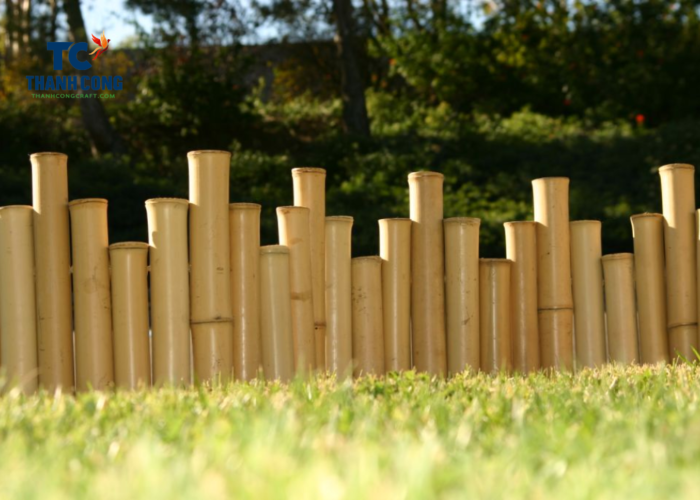
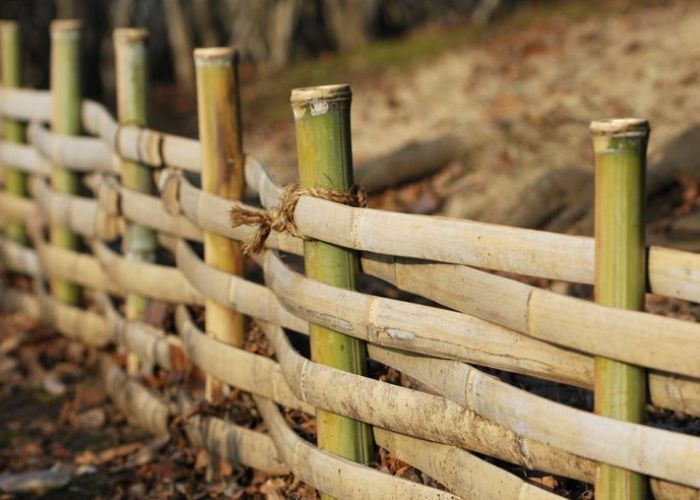
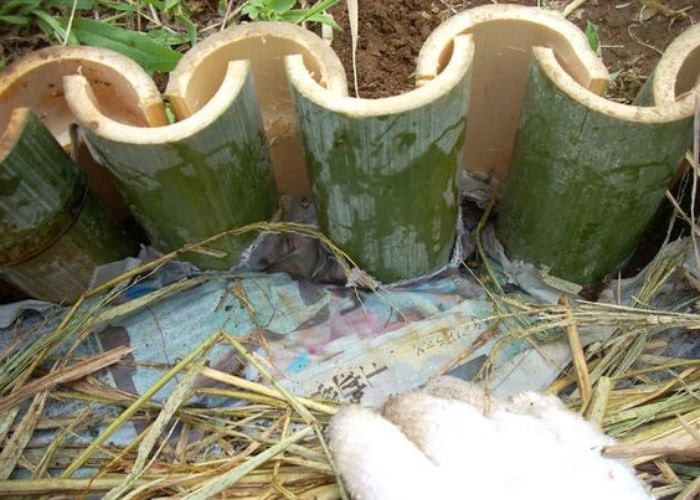
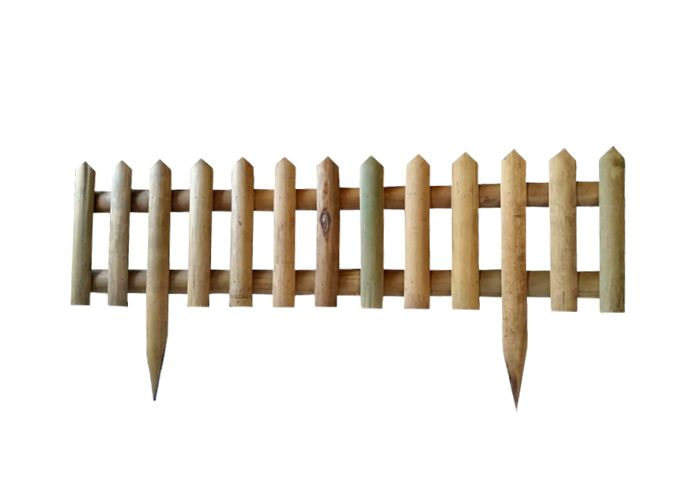
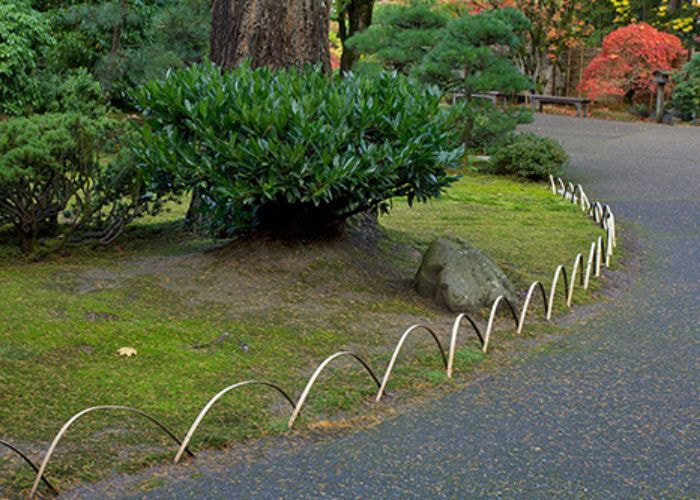
Select the type of bamboo that complements your garden’s size, color scheme, and overall shape. With various bamboo varieties available—such as black bamboo, golden bamboo, dwarf bamboo, long bamboo, green bamboo, and red bamboo—you can customize your fence to suit your preferences.
Utilize whole or halved bamboo sticks when constructing landscape fences. Experiment with different arrangements, whether horizontal or vertical, alternating or adjacent, parallel or crossed, to create diverse and unique fence designs.
Enhance the diversity of your landscape fence by combining bamboo sticks with other materials such as wood, iron, stone, glass, plastic, or grass. Incorporate these materials for frames, legs, bases, or decorative elements, adding richness and visual interest to your bamboo fence.
Surround the bamboo-made landscape fence with additional plantings, including flowers, vines, shade trees, or woody plants, to infuse life and freshness into your garden. Opt for plants that complement the color, scent, and style of your bamboo fence, creating a harmonious and vibrant outdoor space.
2. How to make bamboo garden edging?
Bamboo is a type of grass that has many applications in the fields of construction, decoration and art. One of the popular ways to use bamboo is to make garden borders to create a green and environmentally friendly space. To diy make garden borders with bamboo, you need to prepare the following materials and tools:
Materials Needed:
- Bamboo sticks with a diameter of about 2-3 cm and a length suitable for the length of the garden border you want to create.
- Drill to drill holes on the bamboo sticks.
- Steel or iron wire to connect the bamboo sticks together.
- Hammer to drive the bamboo sticks into the ground.
- Pair of scissors to cut the steel or iron wire.
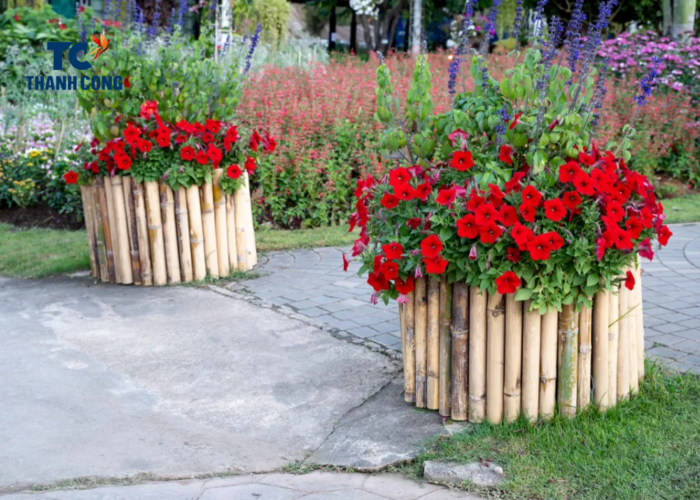
The steps are as follows:
Step 1: Drill holes on the bamboo sticks
You should drill two holes at both ends of each stick, about 5 cm apart. The drill holes should have a diameter equal to or larger than the diameter of the steel or iron wire you use.
Step 2: Connect the bamboo sticks together with steel or iron wire
You should thread the wire through the holes you drilled and tie them tightly at both ends. You can create multiple garden borders by connecting the bamboo sticks horizontally or vertically as you like.
Step 3: Drive the bamboo sticks into the ground
You should choose a suitable location for your garden border, which can be around an area of grass, flowers, ornamental plants or any focal point in the garden. You should drive the bamboo sticks into the ground so that they are upright and spaced equally. You can use a hammer to drive them into the ground or dig small holes to insert them.
Step 4: Complete the garden border with bamboo
You can trim the excess parts of the steel or iron wire to make the garden border look neater. You can also paint or decorate the garden border according to your preference.
3. How to install bamboo edging?
Bamboo edging is a beautiful and durable solution for flower beds, paths or lawns. To install bamboo edging, you need to prepare the following tools: a roll of bamboo edging, a pair of scissors, a hammer, a ruler, a pencil and some nails. Then, you can follow these steps:
- Measure the length of the area where you want to install bamboo edging and cut a piece of bamboo edging that fits that size.
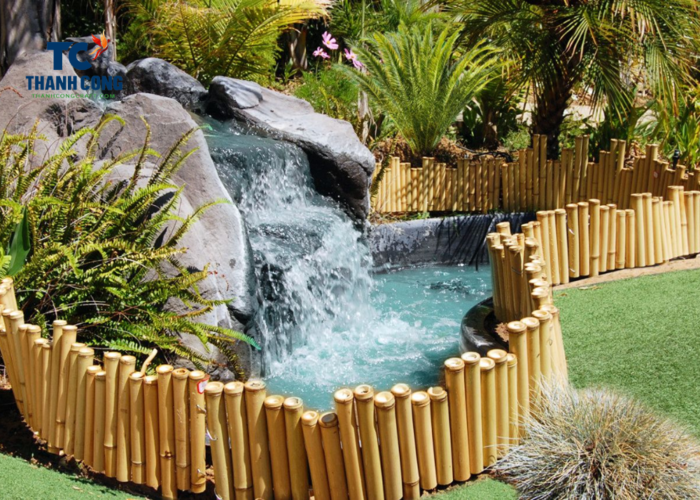
- Place the bamboo edging along the edge of the area where you want to install it and adjust it so that it is straight and symmetrical.
- Use the hammer to lightly tap the nails into the bamboo edging to fix it to the ground. You should tap the nails about 30 cm apart to increase stability.
- Repeat the steps above for other areas where you want to install bamboo edging.
4. FAQs
4.1 How long will bamboo edging last?
The lifespan of bamboo edging also depends on some factors such as quality, installation and climate conditions, and it can last from 5 to 10 years if well preserved.
To make bamboo edging more durable, you should choose sturdy bamboo that is not cracked or rotten, and treated against termites and mold. You should also install bamboo edging so that there is a small gap between the slats to avoid shrinkage due to temperature changes.
Moreover, you should cover bamboo edging from direct sunlight and water it regularly to maintain moisture.
4.2 Do bamboo garden stakes rot?
Bamboo is a type of plant known for its resilience to moisture and natural environmental decay. However, when using bamboo as garden stakes, it’s essential to consider certain precautions to prevent bamboo from becoming damaged and deteriorating.
Here are some preventive measures and maintenance tips for bamboo stakes:
- Choose bamboo varieties with high durability, capable of withstanding weather conditions and resisting insects. Opt for bamboo poles that are thoroughly dried, without outer skin, and free of cracks or holes.
- Treat bamboo stakes by soaking them in a solution of salt, phenol, or other preservatives to enhance their antibacterial properties, resist pests, and prevent mold. It is advisable to soak bamboo stakes for 2 to 4 weeks before use.
- Trim the top and bottom of bamboo stakes to remove soft and weak portions, retaining only the sturdy and thick sections. Also, cut off small branches or leaves to minimize water absorption and moisture retention.
- Plant bamboo stakes in the soil in a way that the lower part of the stakes does not directly touch damp soil. Use stones, bricks, or other materials to create a gap between bamboo stakes and the soil. Dig a hole approximately 30 to 40 cm deep to bury the lower part of the bamboo stakes, providing stability.
- Regularly inspect the condition of bamboo stakes and replace those that are damaged or decaying. It’s recommended to replace bamboo stakes after each growing season or every 2 to 3 years of use
4.3 Bamboo edging pros and cons
Bamboo edging stands out as a beautiful and enduring decorative solution for gardens, pathways, or ponds, offering numerous advantages:
- Infusing a garden with a natural and eco-friendly aesthetic, bamboo edging aligns with sustainable landscaping practices.
- Demonstrating resilience against harsh weather conditions and pests, bamboo edging ensures longevity in various outdoor environments.
- Offering simplicity in both installation and maintenance, bamboo edging provides an accessible way to enhance the visual appeal of outdoor spaces.
- With a diverse range of sizes, colors, and shapes available, bamboo edging allows for customization, enabling you to tailor the look to suit your preferences.
However, it’s important to consider some drawbacks associated with bamboo edging:
- Over time, bamboo edging may experience fading or cracking, particularly if exposed to prolonged sunlight or other environmental factors.
- High temperatures or humidity can lead to deformation in bamboo edging, impacting its original shape and structural integrity.
- If not treated adequately, bamboo may release substances that can pollute the soil, emphasizing the need for proper treatment to mitigate environmental impact.
- Safety Concerns for Children or Pets: Some bamboo varieties may pose a safety risk to children or pets if they feature thorns or sharp edges. Careful selection and placement should be considered in areas accessible to them.
In conclusion, bamboo edging can be an excellent choice for its eco-friendly nature, aesthetic appeal, and durability, but it requires proper care to mitigate its susceptibility to decay and pests.
If you have any further questions, don’t hesitate to send thanhcongcraft an email us at info@thanhcongcraft.com or message us at WhatsApp: +84967485411. Hope to serve you soon! Best regard!












